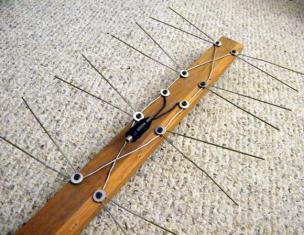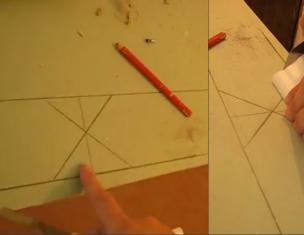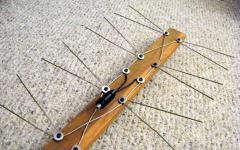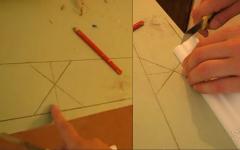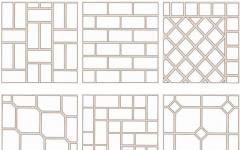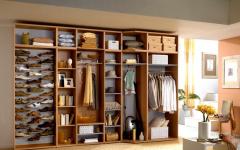One of the problems of multi-storey houses is noise. That is why residents of urban apartments do sound insulation. This event is quite expensive, if you order it from professionals. But in the presence of basic knowledge of noise and vibrations, as well as the minimum skills of construction work, it is possible to inexpensive the room from an excessive noise, the source of which are neighbors.
Where does noise come from
Noise isolation of the room begins not with the purchase of materials and not from installation work. To begin with, it is necessary to find out what type and in which direction is the source of noise. Here it is necessary to determine the most clearly: it is necessary that the sound does not get into the room or so that it does not go beyond the premises. Also, perhaps the question is much glifted. That is, full noise insulation of the room. It is from these conditions that the complexity of works, as well as the selection of materials, depends.
In order for this event to be effective, you need to assimilate that there are only two types of noise sources. This penetration of sound waves due to thin partitions between the walls and the ceiling. In this case, all the work is reduced to the facing with appropriate materials. Or this is a noise of vibration character - it is he who creates a serious problem in insulating work. In this case, the noise source can be remote. Vibrations can pass through all contacting planes through facing materials. Therefore, in order to reduce these oscillations, it is necessary to use special, intended for this and effective materials.
It should also be borne in mind that the sound in the room can be hit not only through the ceilings or walls. Effectively sound penetrates through windows, various communication wells, cracks or cracks. If everything is so, then the noise isolation of the room may not raise the effect, if not to take into account all these factors.
What materials pick up
Remember that these materials differ greatly in purpose, as well as in their effectiveness. Before purchasing them, it is recommended to study their features as much as much as possible.

Many confuse thermal insulation materials with noise insulation. However, some of those tools that are intended for insulation, quite effectively absorb sound waves. It is possible to create silence in some cases will be sufficiently simple thermal insulation.
All materials intended to eliminate noise can be divided into absorbing and reflecting. To achieve maximum efficiency, you must use them in combination.
Material features
Soundproofing materials are distinguished by one feature - this is a direction. So, their structure consists of several layers. Before making noise insulation in the room, it is recommended to take into account the direction of absorption of the sound. And in order to increase efficiency, it is best to lay material in two layers with opposite sides.
There are also elements for vibration insulation. They have absorbing properties. Install it even under various mounting structures. Often this uses foamed silicone or other products based on rubber. Efficiency here depends on the thickness.
Room insulation with your own hands
So that in the room it is truly quiet, you can use plasterboard technologies. At the same time, sound insulation products can be placed in the cavity between plasterboard and walls.
Many believe that there are serious differences between work on the ceiling and walls.
 This is not true. Technology one. But in order to perform work on the floor, it is recommended to use sound insulators of greater density. Then, after laying, they should be covered with any floor covering.
This is not true. Technology one. But in order to perform work on the floor, it is recommended to use sound insulators of greater density. Then, after laying, they should be covered with any floor covering.
Works on the walls
First of all, we should examine the walls on the subject of cracks, various strokes or internal sockets. If you have found something, it is desirable to eliminate this problem, otherwise the efficiency of getting rid of noise will be close to zero. It is best for these purposes a gypsum plaster.

Now you need to build a frame. You can use drywall. You will need a profile for him. You can also use wood slats. In addition, the fasteners should be prepared, which is suitable for fastening the sound insulator to the wall, the material, sheets of plasterboard and self-tapping screw.
Stages of work
The first thing is created a framework. But there is a small nuance. Do not secure profile straight to the wall. Professionals recommend retreat from the wall of about 2 cm. Under the metal profile, it is necessary to put materials to absorb vibration-based vibrations or rubber. Stasted with maximum density. Then, after you have a framework, you can move to the next step - the funds tab. If you need effective noise insulation of the room, materials for these purposes - mineral wool, glass gamble or non-rigid plates.
When you make the choice of a suitable insulator, carefully read the sound absorption coefficient. If the material is soft enough, then this value will be higher. So absorption and noise insulation will be much more efficient.
Now you can set on the profile of plasterboard sheets using self-samples. Well, and then you can do finish.
Price
Noise insulation of walls in the room will not be too expensive. So, plasterboard has a mid-price 90 rubles. Sound absorbers will cost 60 to 400 rubles. Well, add the cost of self-tapping and profile here.

Ready for noise insulation
Today the market offers several such panels. So, if the wall is not too smooth, it is possible, you will need to do the oblast. The panels will then be fixed to the lattice on each other by the "Schip-groove" method. It is a fairly efficient and beautiful noise insulation of the room. In addition, the installation of such panels is very simple. Often these products already have a decorative finish based on tissue or paper.
How much does it cost
Prices for these products on average are approximately 750 rubles. for 1 m 2. The effectiveness and properties of them are quite comparable to all with the same mineral wool. Among the advantages - extraordinary ease. For example, one panel has a weight of 4 kg.
It is suitable for those who want to fulfill the entire room. Also panels can be an excellent interior decoration.
Stick the material on the wall - simple and inexpensive
This is the most inexpensive and most easy way. There are no mineral wool here. In this case, noise insulation in rolls is simply purchased. It is comfortably glued to the walls with glue for vinyl wallpaper. Such a substrate will cost approximately 1310 rubles. For 1 roll. This is 7 m 2. But this is a budget and not too effective solution. The noise level in this case will decrease by only 60%.
It is relevant for those who shoot housing and do not want to make expensive repairs.
Material for room: What is better?
Specialists in acoustics argue that there are no soundproofing materials. There are only designs for this. But we still consider some sound insulators.

Systems "SIPS"
This is a sandwich panel, as well as special facing sheets based on plasterboard. This panel is dense and soft materials. Thus, it is used as a dense layer, and mineral wool or glass gamble. As for the thickness, it depends on a specific model. For fastening panels to the walls there are special design nodes.
Isotex.
This material is created on the basis of environmentally friendly fibers of coniferous wood. These durable, maximum elastic and flexible panels will be saved from air noise and vibration. Such products are decorated with vinyl wallpaper or a special linen fabric. They are easy to install, as well as clean.
For an ordinary apartment, special acoustic panels are considered the best material, but if it is expensive, then mineral wool is suitable. This solution is inexpensive and high-quality.
Now you know how to make noise insulation in the room. For this you do not need to possess special skills. With this, any person will cope with it, and in return will receive a complete silence.



